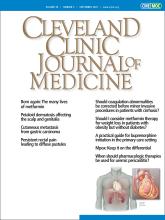ABSTRACT
Buprenorphine is a safe and effective treatment for opioid use disorder but remains underutilized because a major challenge of conventional buprenorphine initiation (termed induction) is that the patient must already be in opioid withdrawal. Previous legal barriers and clinician lack of familiarity with the unique pharmacology of buprenorphine have also limited its use. In this review, we outline changes regarding buprenorphine prescribing laws and physician perceptions of buprenorphine. We also review buprenorphine pharmacology and novel low-dose buprenorphine induction procedures that can be adopted in primary care settings to improve treatment acceptability, retention, and outcomes.
- Copyright © 2023 The Cleveland Clinic Foundation. All Rights Reserved.
- Roberto León-Barriera, MD⇑
- Address:
Roberto León-Barriera, MD, Department of Psychiatry, University of Pittsburgh School of Medicine, 3811 O’Hara Street, Pittsburgh, PA 15213; ral187{at}pitt.edu
- Samantha Jayne Zwiebel, MD, MA
- Vania Modesto-Lowe, MD, MPH
ABSTRACT
Buprenorphine is a safe and effective treatment for opioid use disorder but remains underutilized because a major challenge of conventional buprenorphine initiation (termed induction) is that the patient must already be in opioid withdrawal. Previous legal barriers and clinician lack of familiarity with the unique pharmacology of buprenorphine have also limited its use. In this review, we outline changes regarding buprenorphine prescribing laws and physician perceptions of buprenorphine. We also review buprenorphine pharmacology and novel low-dose buprenorphine induction procedures that can be adopted in primary care settings to improve treatment acceptability, retention, and outcomes.
- Copyright © 2023 The Cleveland Clinic Foundation. All Rights Reserved.






